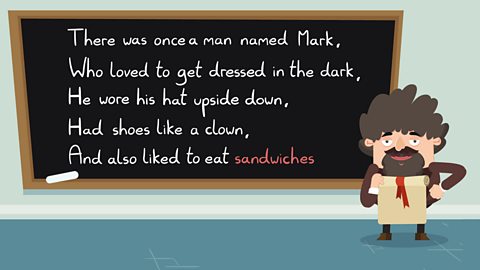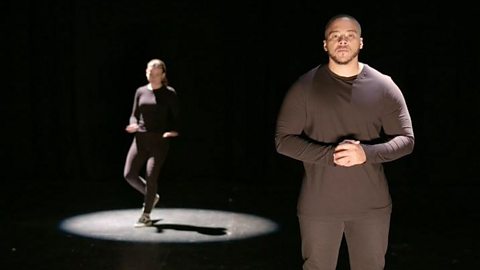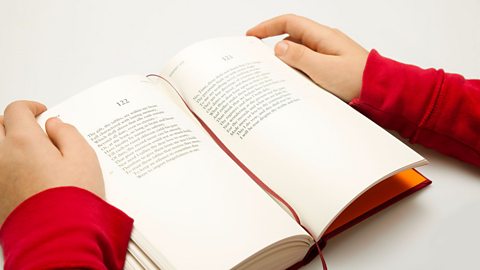Poetic tone
The best way to think of tone in a poem is to imagine how it would be spoken and what mood you think the speaker would be in. There will be clues to the tone not just in the language but in the punctuation and structure of the lines and stanzas, so try a few different ways to read the poem if you aren’t sure.
Here are a few things to ask yourself when trying to decide what the tone of a poem is:
- Who is speaking? Is the poem written in the third person, describing the main subject of the poem as ‘he’, ‘she’, ‘it’ or ‘they’? Or is it written in the first person, using ‘I’ and ‘my’? If it is, do you think the poet is speaking as themselves or have they created a character? If it’s the latter, there will certainly be clues to indicate they aren’t speaking as themselves.
Example: ‘Havisham’ by Carol Ann Duffy is a poem which uses first person perspective, but it is apparent from both the title and the content of the poem itself that the ‘I’ speaking in the poem is not the poet herself but the character of Miss Havisham from Charles Dickens’ novel Great Expectations. Knowing what we know about that character already as well as what she says in the poem helps us understand the bitter tone with which she relates her experience. - To whom are they speaking? Is the poem addressed to the second person, using ‘you’ and ‘your’? If it is, do you think they are speaking to us as the reader or to another person or character? There will be clues in the language, maybe even in the title of the poem, if this is so.
Example: In ‚Äò≥€¥«≥ЂÄôr±‚Äô by Sylvia Plath, the title tells us she is addressing someone directly but it is only through reading the list of descriptions in the main body of the poem that we can work out that she is talking to her unborn baby. Identifying this helps us also identify and understand the playful, affectionate tone of the poem. - What are they talking about? Some poems may seem like a mystery at first but you can usually get an idea of what is being shown by reading through the poem a few times and looking for clues. When you know what is being talked about, you can decide how the speaker is treating the topic and this helps you identify their tone.
Example: Craig Raine‚Äôs ‚ÄòA Martian Sends a Postcard ≥…»ÀøÏ ÷‚Äô contains various descriptions of everyday objects from a car to a toilet, which we can work out from a combination of the descriptions themselves and the title of the poem, which gives us the context and helps us understand why the tone is so observational and detached. - What language is used? Even general observations about the language can help you pinpoint tone. A love poem, for example, might try to sound sensual, positive and harmonious; a poem about injustice might use a lot of vivid emotive language to plead with the reader to sympathise.
Example: ‘My Last Duchess’ by Robert Browning is a monologue by a powerful Duke. While the poem itself is seemingly just about him showing a visitor a painting of his wife who is now dead, it becomes apparent from his choice of language that not only did he have his wife executed, but that he is a domineering man who expects to be obeyed and flattered at all times. He never directly mentions that he had her killed but his hints at it leave no doubt – he is so powerful he doesn’t care who knows what he did and his language is grandiose and full of allusions to his power, helping to create an arrogant, aloof tone in his speech. - What punctuation is used? Aside from obvious cues here, such as exclamation marks showing excitement or anger and question marks showing curiosity or confusion, you can look for punctuation that interrupts the speaker’s flow, such as dashes or ellipsis. This could show the speaker is hesitant to speak or being interrupted, which could help us decide the tone of the poem.
Example: In Thomas Hardy’s ‘The Man He Killed’ the speaker explains how he killed a man when fighting in a war. Even though his words are logical, echoing official justifications for killing in wartime, the use of punctuation in his speech (including dashes, semi-colons and exclamation marks) helps show he is hesitant and actually feeling unsure and remorseful about what he did, indicating a regretful edge to his tone. - How is the poem structured? A neatly arranged poem with similar stanzas and regular line lengths can help show a very different tone to a poem with irregular lines and uneven shapes. The poet may use the structure of the poem to give clues about how the speaker feels, which can in turn help you figure out their tone.
Example: In ‘Hitcher’ by Simon Armitage, the stanzas are roughly the same shape and length – but at the point where the speaker’s temper snaps and he attacks someone, the lines spill across into the next stanza (a device called Sorry, something went wrongCheck your connection, refresh the page and try again.). This contrasts with earlier, more organised stanzas and helps us see how he has lost control, which in turn shows us he is oblivious to the violence he has caused and has a chillingly detached tone.
Test yourself
More on Understanding poetry
Find out more by working through a topic
- count4 of 4

- count1 of 4

- count2 of 4
